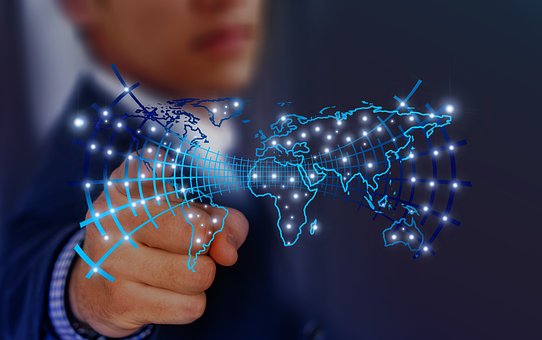Technology seems to have injected itself in the life of every human being. It is becoming a compelling part of our lives, and we can no longer think to exclude ourselves from it.
The fact is undeniable, and technology has a significant influence on the way we currently live our lives. With time, our standard of living has rapidly improved due to technological advancements. Comparing our lives to that of our ancestors, we can see a clear difference in how technology has changed the world around us. With every step you take, you end up falling deeper and deeper into it.
Technology shaping the future
Travel thirty years into the past, when the use of the internet and cell phones were not as mainstream as they are now, no one was sure about the impact it would have. But today, you will find billions of internet and cell phone users across the globe. Who knew that the fantasies of science fiction writers would prove to be true? Meeting via teleconferences and virtual reality is becoming increasingly common. At the same time, artificial intelligence (AI) and machine learning have taken over a more complex task to transform human living standards as well as the workspace.
Today, you will find Nest, Smarthome, Hive, and many other apps changing the way people manage their homes. Having Cortana, Siri, Alexa, and other personal assistants have changed the way we play, shop, and manage out our time.
Technology has always been ten steps ahead of human behavior, which makes us wonder will AI be used as a tool by the designers, or will it be an independent chief architect?
People have always adapted to the current cultural trends set by their community. However, these trends are now being escalated by the advancement in technology. Let’s have a look at different areas of our lives where technology is making vivid waves.
Smart Cities
Technology in today’s world is just a preview of how our lives could be in the future. Initially, city leaders were unaware of how integrated smart technology would become the way they run cities. These days with just a tap on your smartphone, you can get information regarding traffic, transit, health services, community news, and safety alerts.
A smart city makes use of the internet of things (IoT) and information and communication technology (ICT) to improve and maximize the efficiency of city operations. It helps to increase communication between city officials and the general public.
For example, Amsterdam has implemented an app called Mobypark, which allows citizens to find and rent parking spots in the city for a fee. Private residents, hotels or businesses can own these parking spots. With the data received from this app, the city can see what areas have a high demand for parking locations, and during times of the day, week or year, they see an increase in demand.
Cities are now looking for new ways to innovate to enhance their smart cities further. Many seem to expand their education in emerging design and technology for smart cities to keep up with recent developments or new approaches they could find useful.
Technology in the Medical field
We cannot deny the fact that technology has saved many lives. From the new and improved treatments, the best tools for diagnosis, as well as painless and quick healing procedures. The best part is, it keeps improving. With new treatments coming in, rates of survival and life expectancy will continue to increase, improving the quality of life for many.
Thanks to technology – with just a click of a button, we can receive medical alerts and are thus able to stay proactive with diseases like arthritis and diabetes.
Access to information
The meaning of the word “media” has changed due to advancements in everyday technology. Previously, a media company was merely a news platform that published newspapers. Today, a media company is one that transmits information across the globe on various platforms, and this includes social media platforms like Twitter, Facebook, and Instagram.
Around 3.2 billion people are active web users globally, which is almost half the world population, and the amount of information shared on social sites is phenomenal. However, social media isn’t the only reason digital technology exists.
Before we owned cell phones, we had to use a voluminous dictionary merely to find the meaning of a word. Now, you just type it in a dictionary app or Google search engine, and you can get an explanation within seconds. It has become much faster and easier to get access to information, and it’s like you have multiple encyclopedias all in one handheld device.
Communication and Technology
Due to advancements in technology, communication has become faster and easier. If we look back at how people used to communicate not too long ago, we will find proof of how quickly technology evolved in this sector.
Wired telephones, sending out faxes, or writing letters were considered the best way to communicate. However, to connect with anyone across the globe now, we have just one device at our fingertips. We can text, video chat, email, call, and send pictures in mere seconds.
Keeping in touch with the people you love, and having long-distance relationships are nothing to worry about anymore. Many businesses are also shifting towards employees working remotely more often, not only does this reduce transportation costs for employees, it also helps reduce the need to own or rent office space.
Money transfer and payments
There is no longer a need to wait in lines to pay your bills. It is now possible to keep track of and make these payments through apps. You can automatically schedule payments, so you don’t have to worry about remembering to pay them.
Money transfer has also been simplified. Apps like Paypal and Venmo have designed a platform where we can receive and send money from any location. We don’t have to leave our homes to transfer the money to anyone. Even banks have created apps for online transactions. It is particularly useful for increasing access to financial services for those living in rural locations.
Conclusion
Technology has helped improve our daily lives in several ways. Our cities can run more efficiently, and we can improve the treatment of certain illnesses and create cures for others. Access to financial services has improved, and we can easily access a vast mass of information and can communicate more efficiently. There is still, however, the potential to innovate even further and improve multiple aspects of our daily lives.





